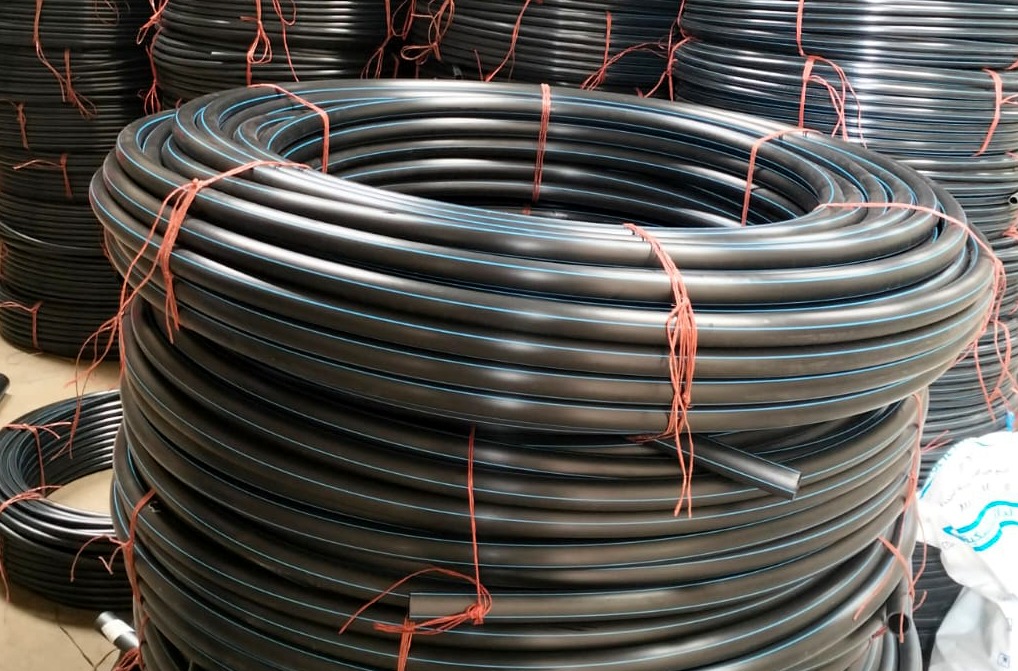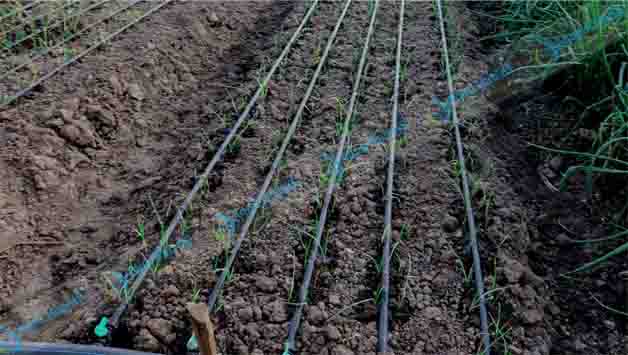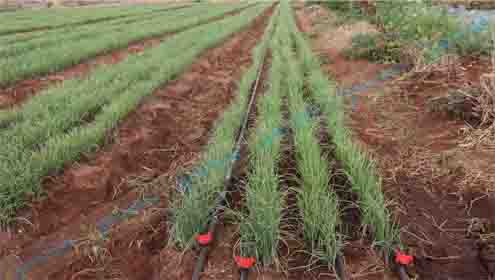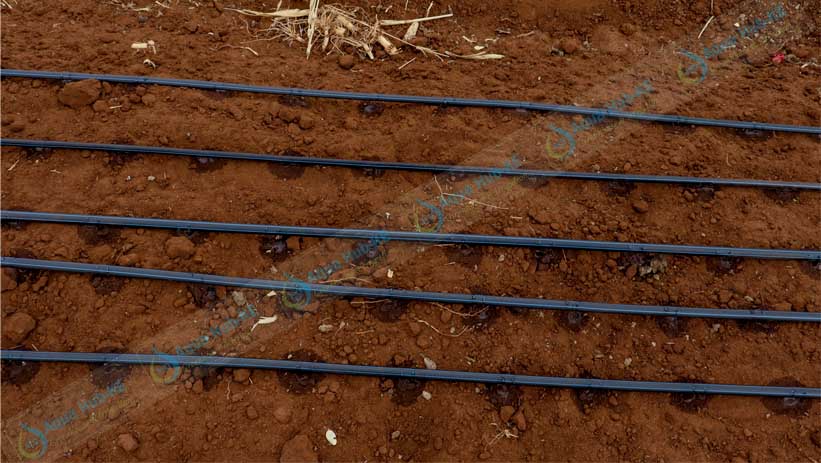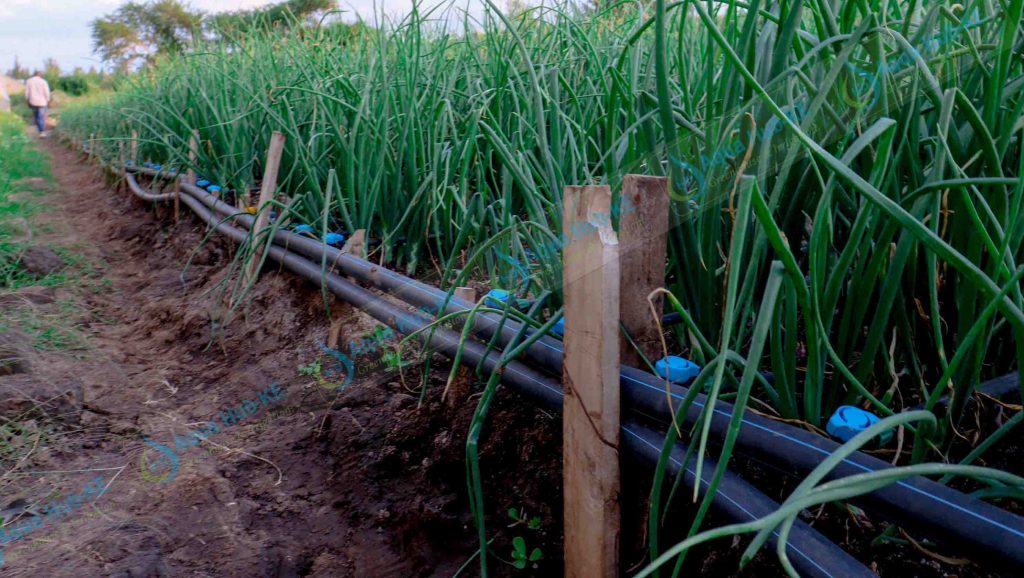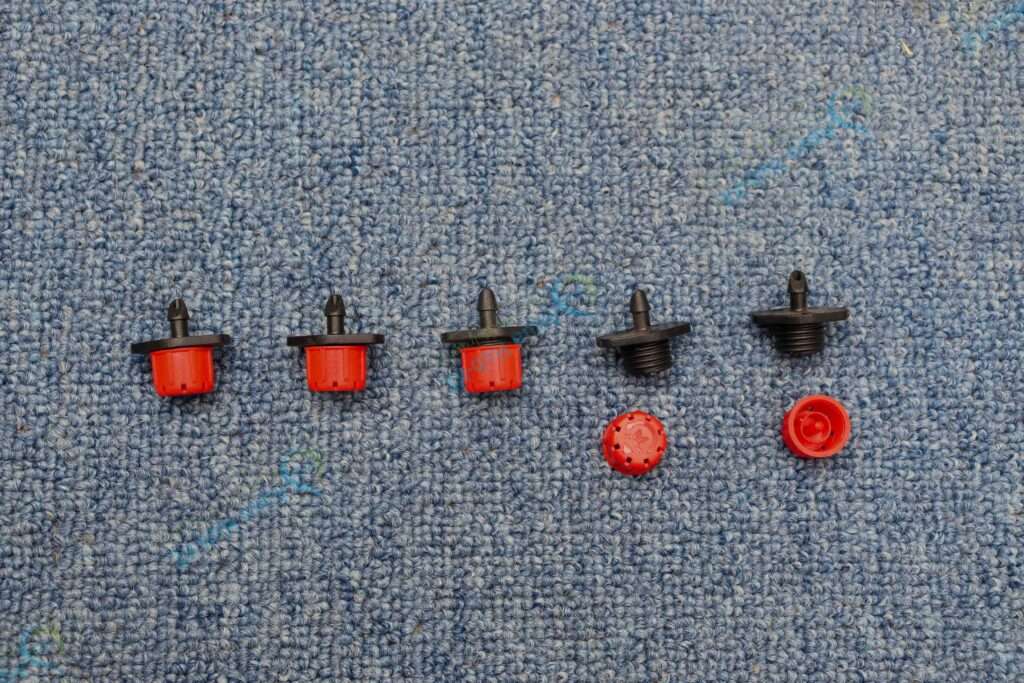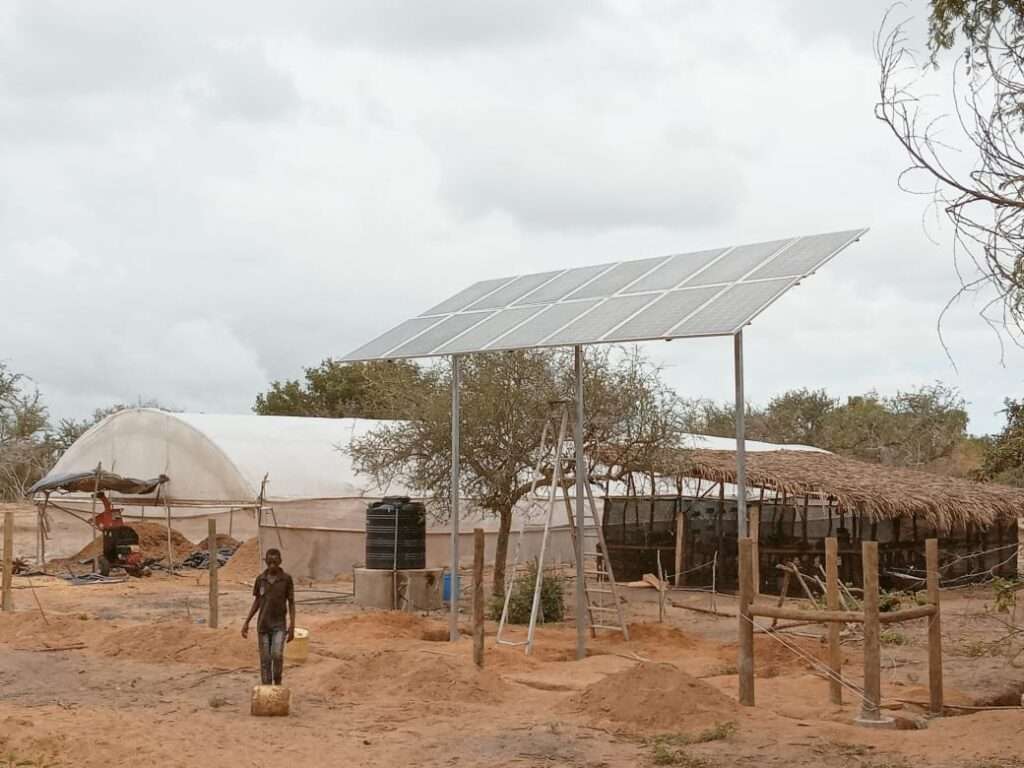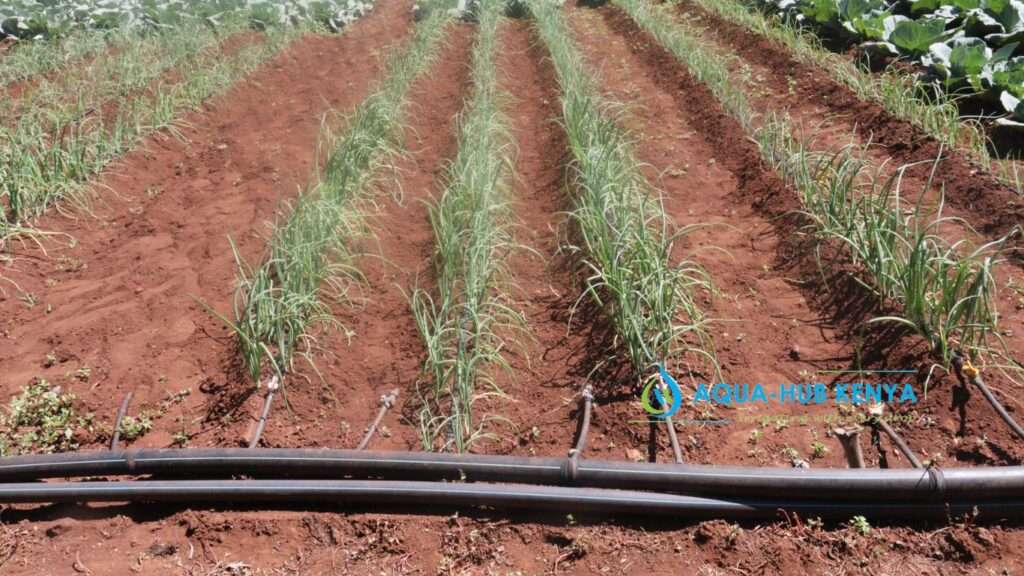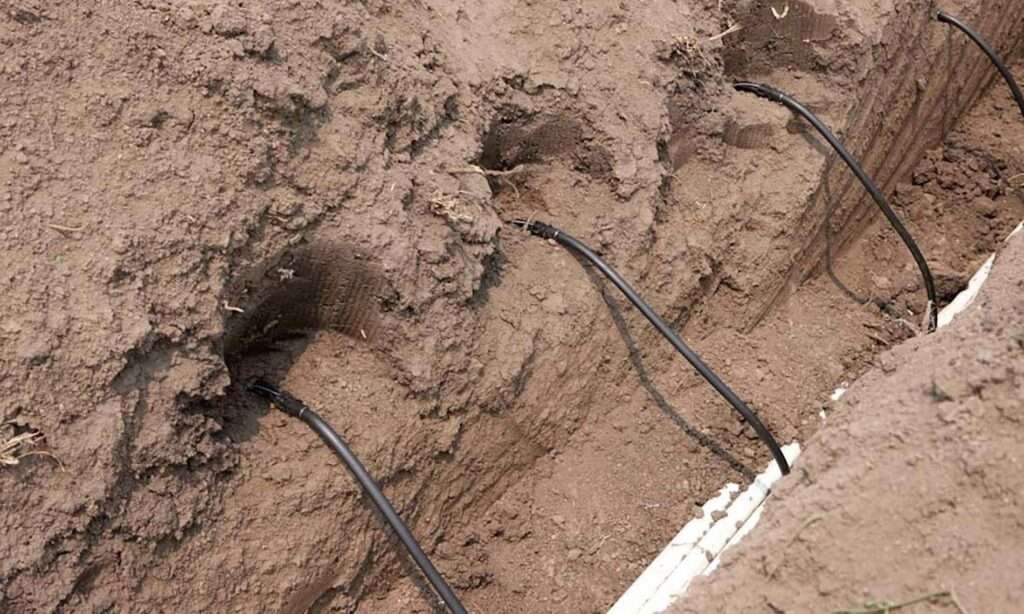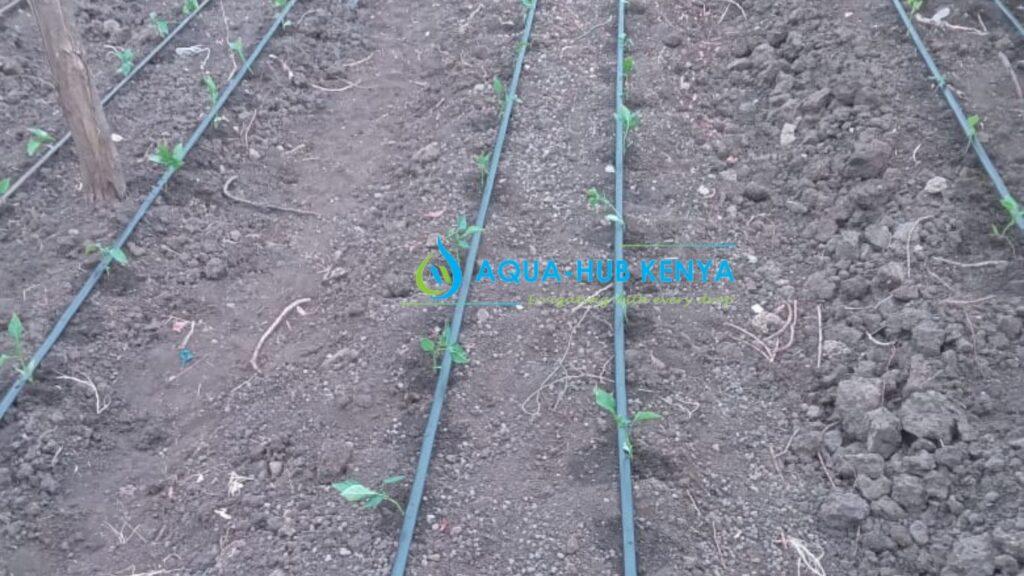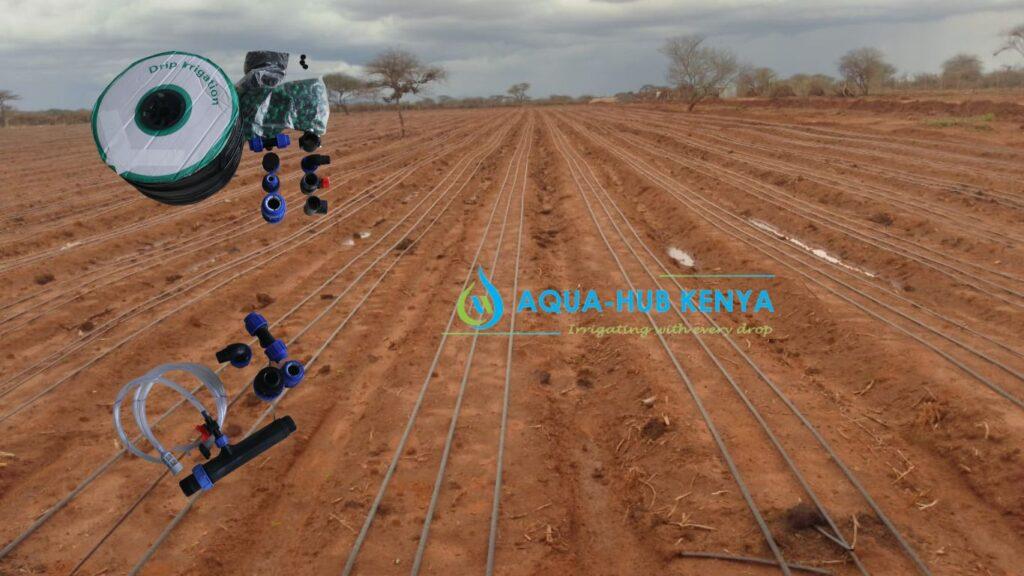The best drip irrigation Kits in Kenya
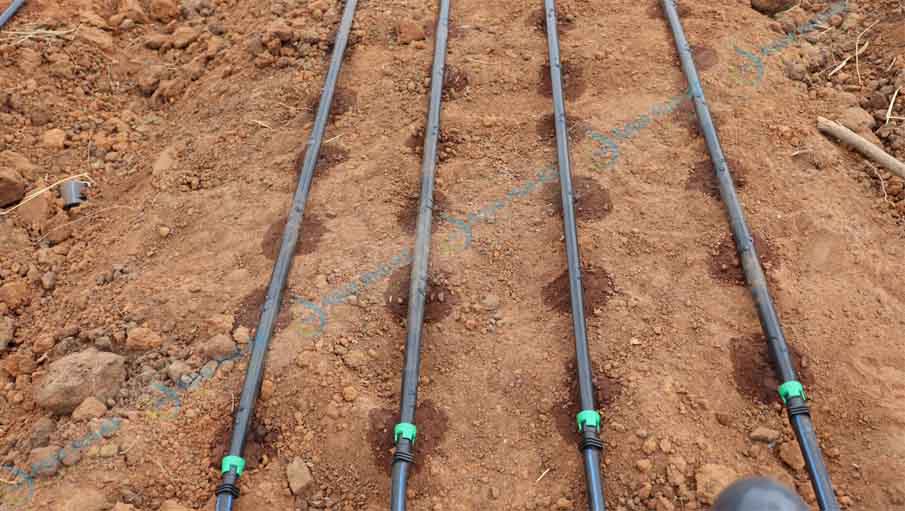
Aqua Hub Kenya supplies the best drip irrigation Kits in Kenya to empower farmers to improve their living standards through high-value crops. Our drip irrigation Kits are affordable and suitable for irrigating many crop varieties.
Drip Irrigation Kits Price in Kenya
The cost of our drip irrigation kits is not constant but at different prices per farm size. Our prices are broken down into the following rates.
|
Farm size |
Cost of Drip Kit |
| 1 Acre |
135,000 – 180,000 |
|
½ Acre |
70,000 – 90,000 |
|
¼ Acre |
40,000 – 55,000 |
|
⅛ Acre |
20,000 – 25,000 |
Drip Irrigation Kits in Nairobi
Aqua Hub Kenya Nairobi has a wide range of drip irrigation kits for sale at affordable prices in Kenya.
We help our farmers generate high income from their crop yields through quality drip irrigation kits.
Call 0790719020
Our Drip Irrigation Kits List
- HDPE Pipes: We use HDPE pipes to connect the drip irrigation system mainline supply section.
- Driplines: a dripline is a pipe with emitter holes for use in dripline connections. It acts as a delivery pipe to supply water to the farm through a drip connection.
- HDPE fittings: HDPE fittings connect pipes and fittings in the HDPE start pipes.
- Filters: Screen filters prevent debris from clogging the drip irrigation system.
- End Plugs: to seal the driplines and mainline pipes from draining water at the pipe ends.
Other requirements that we do not include are tanks, bed preparation, and trench making.
Drip Irrigation System for Sale
A drip irrigation system is a method that irrigates water to the farm through driplines or emitters that deliver water to the root zones of plants in a concise manner.
Drip irrigation kits deliver water directly to the root zones of plants in small amounts equivalent to droplets.
What You Should Know about Our Drip Kits
- Our drip irrigation kits are convenient for large and small land sizes such as an eighth of an acre.
- Driplines are available in emitter spacings of 15, 20, and 30 cm.
- Our drip kits are designed from UV-treated plastic materials known for long life.
- It is less costly to sell per acre of land.
How to Lay Drip Irrigation Kits on the Farm
- Install a mainline pipe connection with a backflow preventor.
- Connect a mesh filter with a pressure rating of twice the water pressure.
- Then Connect a pressure regulator and pressure-reducing valve if your water pressure is high.
- Attach and connect Ball corks to the sections where branching connections should be made.
- Connect mainline pipes to sub-mainline pipes
- Use tee or saddle clamp fitting to connect mainline pipes to risers.
- Connect driplines to the riser using a start connector
- Test the system
Which Crops Are Best for Drip Irrigation Kits
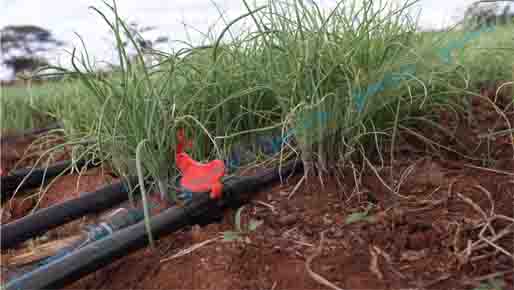
- Tomato
- Capsicum
- Cabbage, Chilly,
- Cauliflower
- Onion
- Peas
- Cucumber
- Pumpkin
- Watermelon
- Strawberry
Advantages of Drip Irrigation Kits
- Drip irrigation saves much water, about 40% compared to furrow irrigation.
- They result in to increase in crop yields unlike other irrigation methods
- Results to higher fertilizer use efficiency.
- Reduce Weed growth
- Save on labor and electricity costs.
- It can work on both small-scale and large-scale farms.
- Allows higher control over irrigation
- Help to reduce Soil erosion
How are Drip Irrigation Kits Suited for Plants?
Plants need water and nutrients for optimal growth at all times. With drip irrigation equipment, crops receive water and nutrients in small doses thus meeting the optimal growing needs thus achieving the highest yield possible.
Under drip irrigation :
- There is high water and nutrients available for plants to utilize
- Soil aeration is maintained
- Fungal infections are avoided
- Not soil salinity can occur due to optimal fertilizer application.
How to Design a Drip Irrigation System
Bed preparation
Drip irrigation kits are designed for use in planting beds often 1 M wide and up to 100m long. Beds enhance the partitioning of the farm into sections to enable easier irrigation control.
Number of Driplines per bed
A drip irrigation system layout can take one, two, or three drip lines per bed. You choose the appropriate number depending on the crops you intend to grow.

